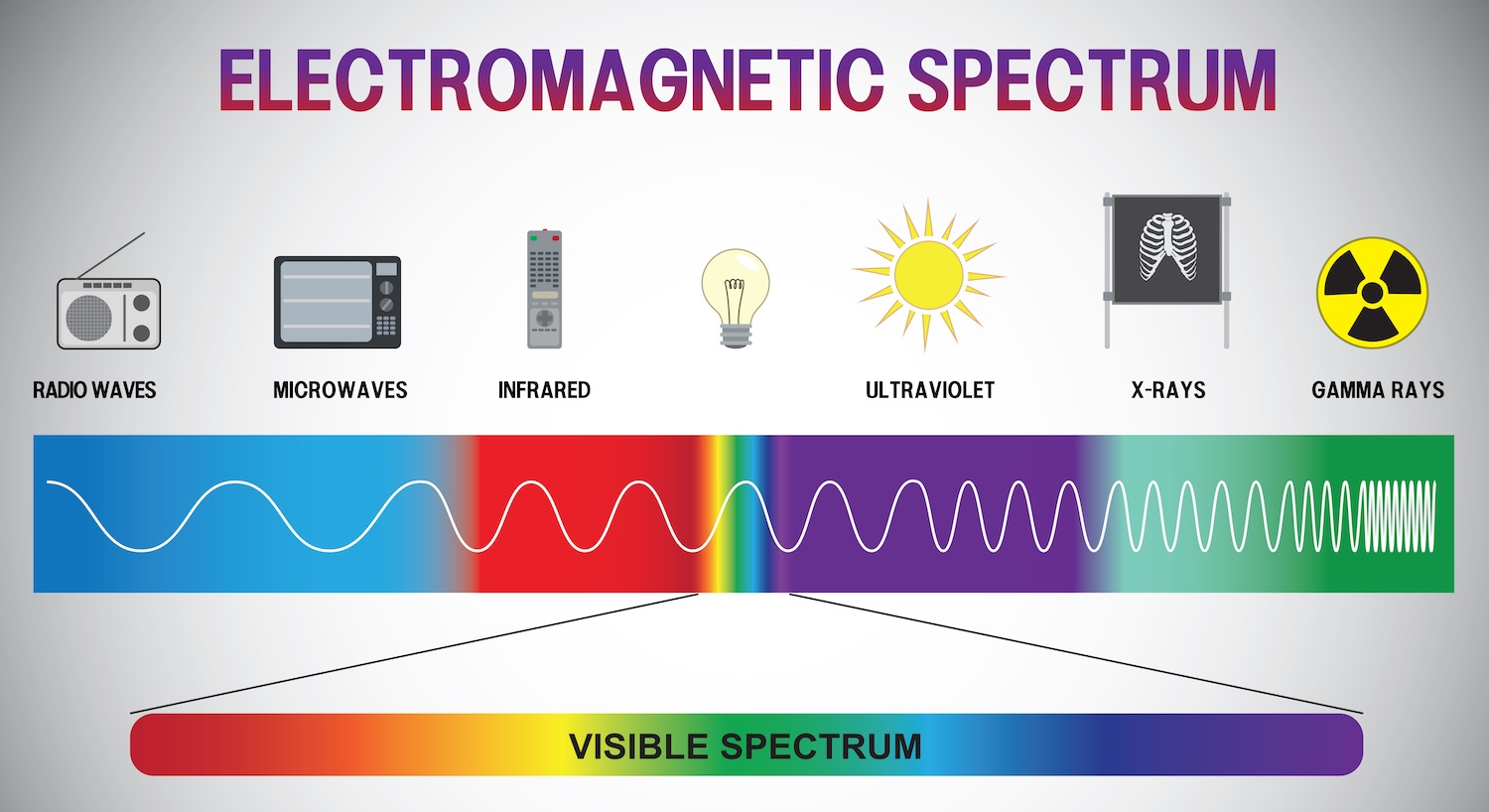In-Building Wireless Is Integral to Today’s Digital World
Fueled by the proliferation of mobile devices, advancements in bandwidth capacity and reach, and the benefits of untethering devices from fixed wired connections, wireless is rapidly becoming the de facto media for connecting people and things. Most people understand that behind every wireless connection is an infrastructure that provides the uplink connection to the local area network (LAN), service provider networks, and the cloud. Cabling professionals, however, need to know precisely how wireless communications work, and that several types of in-building wireless technologies operate at different frequencies, data rates, and distances for various applications.
Contents
- What Is In-Building Wireless and Why is it Important?
- How Does In-Building Wireless Work?
-
Types of In-Building Wireless Systems
◦ Wi-Fi
◦ Cellular
- Keep Learning
What Is In-Building Wireless and Why Is It Important?
An estimated 70 to 80% of all mobile data traffic is generated indoors. In-building wireless networks are crucial for keeping us and our devices connected inside office buildings, stadiums, hotels, hospitals, airports, retail establishments, and more.
Our daily dependence on mobile devices requires wireless connectivity in virtually every facility — and at the same time, more IoT and smart building devices are connecting via wireless technologies for ease of implementation, scalability, and cost savings. Several other in-building applications use wireless technologies for everything from access control and asset tracking to mobile payment, inventory management, and everyday hands-free devices. So reliable in-building wireless coverage — via a range of complementary technologies — is essential in today’s connected world.
How Does In-Building Wireless Work?
All in-building wireless systems operate within the electromagnetic spectrum, which refers to the full range of radiation that consists of electric and magnetic energy waves that move through space. These waves are characterized by wavelength and frequency.
- • Wavelength is the distance covered by one complete cycle of the wave, and frequency is the number of waves within a certain amount of time.
- • Frequency is expressed in hertz, which equals one cycle per second (one megahertz equals one million cycles per second, and one gigahertz equals one billion cycles per second). The higher the frequency, the shorter the wavelength.
The entire electromagnetic spectrum ranges from extremely low-frequency radio waves with the longest wavelengths to infrared, ultraviolet, x-rays, and extremely high-frequency gamma rays with the shortest wavelengths. Note in the graphic below that visible light, only a tiny fraction of the spectrum is made up of the seven colors humans can see.

The electromagnetic spectrum ranges from radio waves with a long wavelength to gamma rays with the shortest wavelength.
Wireless Communications Frequencies
Wireless communications fall within the radio frequency (RF) portion of the spectrum, from about 3 Hz to 3000 GHz. The RF spectrum is a fixed, finite resource that is regulated by the Federal Communications Commission (FCC) and the International Telecommunication Union (ITU) to prevent interference. It is essentially sliced and diced into various “bands” for a range of transmission types and applications, such as GPS navigation, military and emergency communications, television broadcasts, AM and FM radio, weather satellites, cellular, Wi-Fi, Bluetooth, and many more. Some of the bands are allocated for a specific service, while others are sold or licensed to operators. Note that all RF signals use some type of antenna that turns electrical signals into RF signals and vice versa.
The various RF bands are designated as either very low, low, medium, high, very high, ultra high, extremely high, and tremendously high frequency. As frequency increases, bandwidth capacity increases and range decreases. Signal path loss is lower at lower frequencies, which offers better propagation (the ability to penetrate materials) and range. That is why submarines use low-frequency bands that can penetrate seawater over long distances. The following table summarizes the various RF bands and their common applications.
|
Name |
Frequency Range |
Application |
|
Low Frequency (LF) |
30 KHz |
Navigation, submarines, weather systems, standard time signal, European AM radio |
|
Medium Frequency (MF) |
300 KHz to 3 MHz |
Marine/aircraft navigation, AM radio |
|
High Frequency (HF) |
3 MHz to 30 MHz |
Military, aviation air-to-ground, maritime distress, AM radio, amateur radio, shortwave broadcast |
|
Very High Frequency (VHF) |
30 MHz to 300 MHz |
Two-way emergency, FM/TV broadcast, amateur radio |
|
Ultra High Frequency (UHF) |
300 MHz to 30 GHz |
GPS, cellular, Wi-Fi, satellite phones, two-way radios (walkie-talkies), radar, TV broadcast, Bluetooth, Zigbee, long range |
|
Extremely High Frequency (EHF) |
30 GHz to 300 GHz |
High band 5G, satellite, radar, scientific research, astronomy |
|
Tremendously High Frequency (THF) |
300 GHz to Infrared |
R&D, astronomy, experimental |
This table shows the frequencies that carry common types of wireless communications.
Types of In-Building Wireless Systems
While you may think of wireless connectivity in buildings as strictly Wi-Fi, multiple wireless technologies are vital for a wide range of applications and devices. All of them operate over different frequencies and function in their own unique way.
Wi-Fi
The Wi-Fi applications we care about in the Information and Communications Technology (ICT) industry fall within the UHF range of 300 MHz to 30 GHz. IEEE 802.11 Wi-Fi is the primary application deployed in the enterprise space; Wi-Fi 5, 6, 6E, and 7 operate in the 2.4, 5, and 6 GHz frequency bands, as shown in the table below. You can learn more about the cabling requirements for Wi-Fi applications in our page about cabling for Wi-Fi.
|
|
Wi-Fi 5 |
Wi-Fi 6 |
Wi-Fi 6E |
Wi-Fi 7 |
|
Standard |
IEEE 802.11ac |
IEEE 802.11ax |
IEEE 802.11ax |
IEEE 802.be |
|
Transmit Frequency |
5 GHz only |
2.4 GHz and 5 GHz |
2.4 GHz, 5 GHz, and 6 GHz |
2.4 GHz, 5 GHz, and 6 GHz |
|
Max Number of Streams |
8 |
8 |
8 |
16 |
|
Max Data Rate per Stream |
866 Mb/s |
1.2 Gb/s |
1.2 Gb/s |
2.9 Gb/s |
|
Max Theoretical Data Rate |
6.93 Gb/s |
9.61 Gb/s |
9.61 Gb/s |
46.1 Gb/s |
|
Typical Speed |
1.3 Gb/s |
5 Gb/s |
5 Gb/s |
18 Gb/s |
This table compares the standards, frequencies, and capacities of the Wi-Fi categories.
Because the RF spectrum is a fixed resource, facing increasing demand from more users and devices needing greater bandwidth, new and innovative ways of optimizing the spectrum are critical.
Multiple channels exist within each frequency band, and the FCC defines which channels are available within the Unlicensed National Information Infrastructure (U-NII). Some channels within the frequency range have been allocated to specific uses and are unavailable for Wi-Fi. The 2.4 GHz band has 14 channels, the 5 GHz band has 29, and the 6 GHZ band has 59. But while 5 and 6 GHz channels do not overlap, most of the channels in the 2.4 GHz band do overlap, which increases the potential for interference and reduces transmission rates. Only 3 of the 14 channels available within the 2.4 GHz band are considered non-overlapping: channels 1, 6, and 11.

Within the 2.4 GHz frequency band, only channels 1, 6, and 11 are considered non-overlapping.
One way to increase bandwidth is through channel bonding, where multiple narrow channels aggregate into wider channels. In the 5 GHZ band, for example, smaller non-overlapping 20 MHz channels can be combined to create fourteen 40 MHz channels, seven 80 MHz channels, or three 160 MHz channels. The opening of the 6 GHz frequency with 59 non-overlapping 20 MHz channels for Wi-Fi 6E and 7 accommodates more users and greater bandwidth by providing even more channel bonding opportunities, enabling twenty-nine 40 MHz, fourteen 80 MHz, and seven 160 MHz channels to support more high-bandwidth users. With only three non-overlapping channels, channel bonding in the 2.4 GHz band is limited to a single 40 MHz channel.

Within the 5 and 6 GHz frequency bands, channel bonding can be used to increase bandwidth where smaller 20 MHz channels are combined for fewer but larger 40, 80, and 160 MHz channels.
While some basic residential Wi-Fi access points (WAPs) are set with a limited number of channels, higher-end enterprise-grade WAPs typically offer the ability to configure different channels at various widths. It is important to note, however, that not all WAPs support 160 MHz channel widths or channels that share spectrum with weather and radar systems, known as DFS channels. DFS stands for dynamic frequency selection, which is a mechanism that requires WAPs to listen for radar events and automatically move traffic off those channels when detected. To avoid having to comply with DFS regulations and get their WAPs certified, many vendors simply choose not to offer DFS channels. Plus, the time required to scan DFS channels for radar events and move clients to a different channel can cause delays that impact real-time applications such as voice calls, resulting in choppy audio.
It’s important to note that Wi-Fi channel availability can vary by region. In the U.S., all channels within the 5 GHz frequency space are available except for those between 5350 MHz and 5470 MHz (U-NII-2B). However, countries like China and Indonesia have restrictions that prohibit the use of channels between 5350 MHz and 5730 MHz, and Japan prohibits use of channels between 5735 MHz and 5895 MHz. And while the U.S. has fully adopted the 6 GHz band for Wi-Fi, other countries have only approved a portion of it. As more nations embrace the higher-frequency 6 GHz spectrum, channel usage regulations may evolve globally.
In addition to channel bonding, there are several WAP technologies that can achieve greater bandwidth. Beamforming is one such technology that concentrates signals and transmits them over multiple send-and-receive antennas. This is also referred to as multiple-input, multiple-output (MIMO) technology. The signal associated with an antenna is called a spatial stream, and the ability to support multiple spatial streams is a feature of Wi-Fi 5, 6, and 7, with Wi-Fi 7 doubling the number of spatial streams from 8 to 16.
Another technology that improves Wi-Fi is orthogonal frequency division multiple access (OFDMA). Introduced in Wi-Fi 6, OFDMA is a signaling scheme that allocates bandwidth more efficiently based on the needs of the device and accommodates multiple users at the same time. In addition, by maintaining 2.4 GHZ operations, Wi-Fi 6, 6E, and 7 can leverage the greater range of 2.5 GHz for lower-speed wireless IoT sensors, preventing these devices from slowing down bandwidth within the 5 GHz and 6 GHz non-overlapping channels.
Some advanced WAPs may also have additional vendor-specific functionality to improve performance. For example, some WAPs can analyze channel activity to select the best channel and channel width for specific devices or prioritize traffic on a per-device basis to accommodate delay-sensitive applications.
Cellular
Like Wi-Fi, cellular communications operate in the 300 MHz to 30 GHz UHF range of the electromagnetic spectrum, except for high band 5G cellular that operates in the 30 to 300 GHz EHF range. However, unlike Wi-Fi, which operates within unlicensed bands, cellular operates within licensed bands that can only be used by the company that licenses them, requiring Radio Access Network (RAN) and paid service provider plans. For example, AT&T mid-band 5G operates at 3.45 to 3.55 GHz, while Verizon operates at 3.7 to 3.98 GHz. Citizen’s Broadband Radio Service (CBRS) is the only cellular-based technology that operates in an unlicensed frequency band from 3.55 to 3.7 GHz established by the FCC for private mobile networks in the U.S. CBRS is ideal for locally-controlled applications like push-to-talk, IoT, and other unique applications for large campus environments and industrial sites, or for delivering broadband service to underserved communities and schools, since it offers 4 times more coverage than a typical WAP and is less expensive than bringing in traditional 4G or 5G service.
Cellular operates across a broader range of frequencies than Wi-Fi. 4G operates from 600 MHz to 2.5 GHz, 4G LTE operates from 700 MHz to 2.7 GHz, and 5G operates from 450 MHz to 40 GHz. Like Wi-Fi, cellular communications leverage channel bonding to increase capacity and bandwidth. 5G supports channel sizes ranging from 5 to 100 MHz for below 6 GHz, and from 50 to 400 MHz above 24 GHz. Due to its broad operating range, 5G is divided into three frequency bands — low, mid, and high.
- • Low band 5G is anything less than 1 GHz. At this lower frequency, propagation and range are significantly better, but bandwidth is limited. Low band 5G is ideal for nationwide blanket coverage along highways and in remote and rural areas.
- • Mid band 5G typically transmits between 1 and 6 GHz to balance coverage and speed. It is commonly used for 5G mobile connectivity in cities and across suburban areas and campuses, supporting speeds up to about 2 Gigabits per second (Gb/s).
- • High band 5G operates at 24 to 47 GHz, providing the fastest data rate and lowest latency across shorter distances. High band 5G has limited propagation and is therefore highly susceptible to interference from trees, buildings, and atmospheric conditions like rain and fog, while also being less susceptible to interference from other devices, since fewer devices operate in this frequency range. However, a direct line-of-sight high band 5G deployment has the potential to reach data speeds of 20 Gb/s. It is ideal for high-density, targeted areas and ultra-reliable, low-latency communications for applications like self-driving cars, industrial automation, augmented and virtual reality, and ultra-high-definition video streaming.
Cellular’s poor propagation into and through buildings often requires distributed antenna systems (DAS) to provide service for indoor enterprise spaces. A DAS includes antenna nodes placed throughout a building to boost cellular coverage and can support multiple frequencies (i.e., 3G, 4G, LTE, 5G), which allows it to be shared by multiple carriers and used for emergency communications. Small cells are another option for indoor wireless coverage, but they only support a single, defined frequency for a single carrier. A DAS is considered a more scalable and a better choice for large facilities that need to support multiple users and carriers, especially in heavily populated public spaces like student centers, airports, shopping malls, stadiums, and convention centers.
Cabling for a DAS uses a combination of fiber, coaxial, and category cabling, depending on the type of system and configuration. At the headend, an in-building cellular repeater distributes the cellular signal to nodes over coaxial cable in a passive system or over fiber and/or copper cable in an active system. Passive coaxial systems are used in smaller installations where the coaxial cable functions as the antenna, but they do not provide the strongest signal. Active systems are ideal for larger buildings and use fiber optic and copper category cabling between the repeater and the active nodes, like a Wi-Fi deployment. A DAS can also be a hybrid of the two, with fiber optic cable connecting to remote radio units (RRUs), which then distribute the signal to passive antennas over coaxial cable.
Low-Speed Wireless
Wi-Fi and cellular DAS are not the only indoor wireless technologies used in the enterprise space. A variety of short-range, low-speed wireless technologies are used across a range of applications. Bluetooth technology operating in the 2.4 GHz range is used for everyday device-to-device communications, such as smartphones and wireless headsets, speakers, and peripherals like mouses and keyboards. It is also used for access control, gaming consoles, IoT sensors, and real-time location systems. Bluetooth comes in Class 1, Class 2, and Class 3 devices. Class 1 transmits at 100 mW to reach 100 meters, Class 2 transmits at 2.5 mW to 10 meters, and Class 3 transmits at 1 mW to less than 10 meters at speeds ranging from 700 kilobytes per second (Kb/s) to 50 megabits per second (Mb/s).
Similar short-range, low-speed technologies include Zigbee, which also transmits on the 2.4 GHz frequency to about 20 meters and at speeds up to 250 Kb/s, and Z-Wave, which operates in the 800 to 900 MHz range for less interference and a more extended range of about 100 meters but with a speed of only 100 Kb/s. Both Zigbee and Z-Wave use a centralized hub and can support hops between several devices. These two technologies are primarily used for smart metering, building automation, smoke detectors, and other smart IoT sensors, but Zigbee is more readily available across a wide range of devices. As enterprise businesses deploy more IoT sensors for everything from occupancy and air quality to crowd control and leak detection, more vendors offer WAPs with integrated Zigbee technology. RFID technology is also considered a short-range, low-speed wireless technology that operates at low frequency (30 to 300 KHz), high frequency (3 to 30 MHz), and ultra-high frequency (300 MHz to 3 GHz). RFID is primarily used for retail inventory management, asset tracking, access control, and mobile payment.
Long-range, low-power wireless technologies are also available for collecting data from very low-speed, battery-operated IoT devices and sensors over much greater distances. These technologies typically operate at very low frequencies with excellent propagation and support speeds up to about 1 Mb/s. LoRa is one such technology that operates at 915 MHz in the U.S. and 868 MHz in Europe. It can reach distances of up to 4.8 km (3 miles) in urban areas and up to 16 km (10 miles) in rural areas, although line-of-sight rural deployments at very low speeds have reached much farther. LoRa is ideal for large-scale IoT deployments such as smart campus and city applications, smart agriculture, health wearables, and fleet monitoring. It uses gateways that wirelessly receive data and then forward it over existing wired networks. There are also cellular-based long-range, low-power wireless technologies like Narrowband IoT (NB-IoT) and LTE-M designed to support similar IoT use cases, but which use cellular service as their backhaul.




